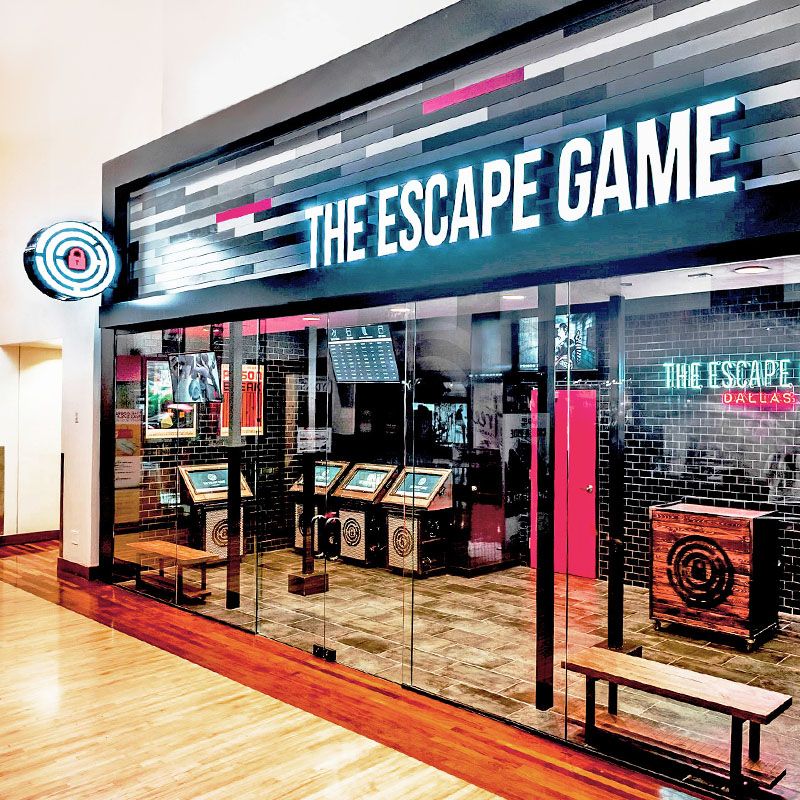Team Tasks at Minneapolis Escape Room-- Perfect for Buddies and Household
Wiki Article
Team Methods: Just How to Collaborate Successfully in a Retreat Area
Groups should proactively pay attention to each participant's insights, assign roles that straighten with specific strengths, and maintain routine check-ins to ensure focus and stop redundancy. By promoting an atmosphere that values communication and versatility, groups can dramatically heighten their efficiency and success rates.Establish Clear Interaction

To facilitate clear interaction, it is important to assign a main factor of call for info circulation. This role includes summarizing searchings for and proposed approaches to make sure everybody remains on the exact same web page. In addition, taking on a methodical technique to conversations can avoid chaotic exchanges. As an example, short, focused updates from each employee can keep the team informed without overwhelming them with information.

Assign Roles Purposefully
While clear communication sets the structure for efficient team effort, assigning functions purposefully guarantees that each staff member's staminas are made use of effectively. In a getaway room circumstance, the time-sensitive and complicated nature of obstacles necessitates a well-organized strategy to task delegation. By recognizing and leveraging individual proficiencies, teams can optimize their analytical capacities and enhance general efficiency.A person with a keen eye for information might stand out in locating covert items, while a sensible thinker might be much better matched to fixing challenges. This function often needs solid organizational and social skills.
Second, ensure that roles are versatile and adaptable. As new difficulties arise, the team needs to be able to pivot, reallocating jobs as needed. This adaptability assists keep energy and avoids bottlenecks that could occur as a result of stiff duty assignments.
Eventually, a strategic approach to role project not just optimizes the staminas of each group member yet also promotes a natural environment, driving the group towards a successful getaway.
Use Diverse Abilities
Identifying and taking advantage of the varied abilities within your team can considerably boost your performance in a retreat space. Each staff member brings unique staminas to the table, and properly leveraging these capabilities can speed up problem-solving and enhance general efficiency. A team participant with solid analytical skills might excel at decoding intricate codes or patterns, while another with eager empirical capabilities may promptly identify hidden ideas that others may overlook.
Urge group participants to articulate their insights and concepts immediately, making sure that all potential options are thought about. In addition, appointing tasks that line up with each member's staminas can prevent bottlenecks and make you could look here certain that progress is constant.
Furthermore, diversity in abilities commonly converts to diversity in believing styles, which is invaluable in a retreat area setup. While some difficulties might call for logical thinking and accuracy, others might take advantage of creative and side thinking. By recognizing and leveraging this diversity, groups can address a broader variety of challenges more efficiently, thereby enhancing their possibilities of a successful retreat.
Manage Time Properly

Recognize noticeable puzzles and separate tasks based on group members' strengths, making certain that nobody is idle. This technique can help keep the group concentrated and stop time from slipping away unnoticed.
Additionally, stay clear of tunnel vision. If a problem is taking also long, revolve employee or carry on to another challenge, returning later with fresh perspectives. Communication is critical-- maintain everyone upgraded on addressed challenges and continuing to be tasks to stay clear of redundant initiatives.
Lastly, make use of any hints or clues moderately however tactically - best escape room. Recognizing when to request for aid can save useful time. By adhering to these time management principles, teams can dramatically improve their chances of a successful and enjoyable retreat area experience
Debrief and Mirror
Representation is an essential aspect of group this advancement and renovation in the context of escape areas. As soon as the obstacle is completed, whether effectively or otherwise, it is important for the team to take part in an organized debriefing session. This procedure allows staff member to assess their efficiency, identify toughness, and identify areas for enhancement.Start the debrief by discussing what worked out. Highlight details instances of reliable interaction, problem-solving, and collaboration. Identifying these favorable behaviors enhances them and urges their repetition in future challenges.
Next, resolve the obstacles experienced. Go over moments of complication, miscommunication, or inadequate strategies. Urge an open and useful dialogue where staff member can share their point of views without concern of objection. This fosters a culture of constant improvement and understanding.
Final Thought
In final thought, effective partnership in a getaway room is based upon clear interaction, critical role assignments, the reliable use of diverse skills, and proficient time management. By developing a natural and flexible team setting, the probability of efficiently solving problems and accomplishing the goal of leaving the room is considerably boosted.Report this wiki page